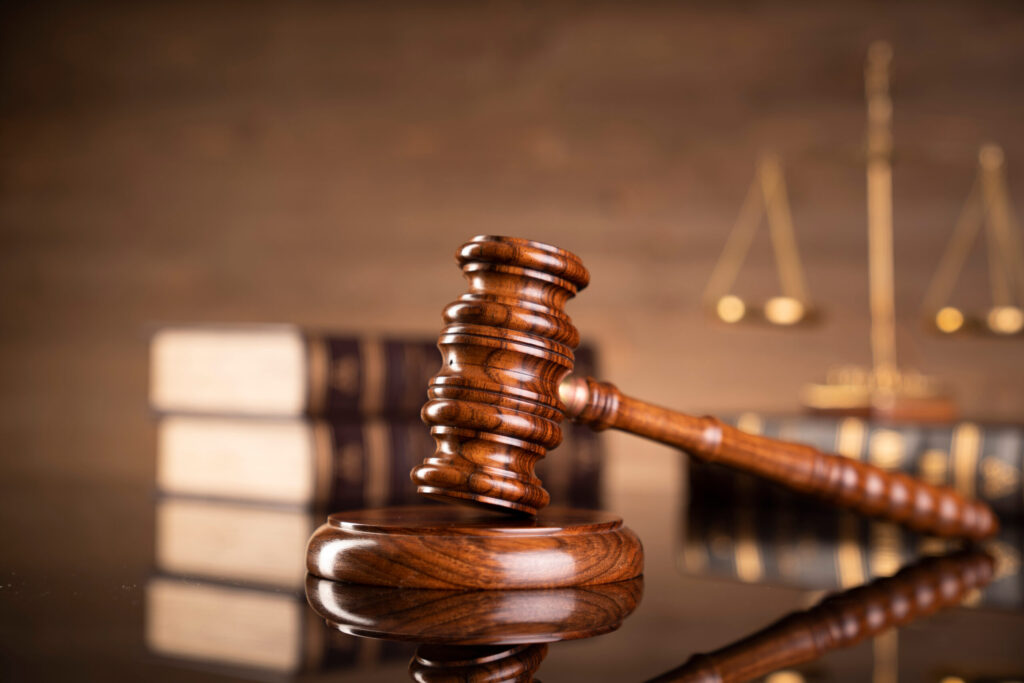The Mathura rape case of 1972 marked a significant turning point in India’s legal history concerning rape laws. In this case, a young tribal girl, Mathura, was allegedly raped by two policemen inside a police station in Maharashtra. Despite the brutal nature of the crime, the lower courts acquitted the accused on the grounds of “consensual sex,” arguing that Mathura did not physically resist.
This judgment, later upheld by the Supreme Court, sparked national outrage. Feminist groups and legal activists heavily criticized the verdict, leading to public protests and the famous “Mathura Rape Case” becoming a symbol of the country’s flawed legal system regarding sexual assault. The case resulted in massive changes in India’s rape laws, particularly through the Criminal Law Amendment Act of 1983, which introduced a more victim-centric approach and established custodial rape as a specific offense.
These reforms after Mathura Rape Case reflected the growing awareness and push for women’s rights in India. The case is still referenced as a landmark in legal discussions on rape and consent, illustrating how societal attitudes toward sexual violence can shape the legal laws. In this article, we will explore the Mathura rape case, its implications on custodial rape laws, and the subsequent changes in Indian legal history. We will also examine the case’s significance in highlighting women’s rights and the role of social movements in advocating for justice.
Incident Details of Mathura Rape Case
Brief Background of Mathura
Mathura was a 16-year-old tribal girl from a marginalized community in Maharashtra, India. She lived in a village near Desai Ganj, a town in the Gadchiroli district. The region is characterized by its tribal population and socio-economic challenges. Mathura’s background played a significant role in the perception and handling of her case within the legal system, reflecting societal biases against tribal women. Mathura was an orphan and had previously lived with her brother, Gama.
In several tribes in Western India, including those in Rajasthan, Gujarat, and Maharashtra, live-in relationships are a common practice. This cultural tradition allows couples to choose their partners and decide not to marry immediately. For example, the Bhils in Gujarat and the Garasia and Gamar communities in Rajasthan often cohabit before getting married. These communities, which rely on farming and manual labor, have faced extreme poverty for generations. They typically have children while living together and only marry once they can afford the costs involved. Sometimes, family heads even arrange group marriages for multiple couples to save on expenses.
Events Leading to the Incident at Desai Ganj Police Station
Mathura, a young orphan, lived with her brother Gama and worked as a laborer in the household of Nushi, who is related to Ashok, a young man with whom she developed a romantic relationship. According to the traditions of her tribe, Mathura ran away with Ashok and is now living with him. They intended to marry in future but the brother of a minor girl (Mathura) opposed her union with Ashok and filed a complaint at the local police station, alleging that she was being kidnapped by Ashok and his family. On the night of the incident March 26, 1972, this complaint against her relationship by Gama led to Ashok, Mathura, Nushi, and others being called to the police station. After taking statements from everyone involved, two police constables, Tukaram and Ganpat, asked Mathura to stay behind and her relatives were told to wait outside.
It is reported that Constable Ganpat then took Mathura to a toilet near the back of the building, where he loosened her underwear and shined a flashlight on her private parts. He then dragged her to the main building, pushed her to the ground, and raped her despite her strong resistance. Following this, Constable Tukaram approached Mathura, fondled her, and attempted to rape her as well, but he was too drunk to succeed.
Mathura’s family, waiting outside the police station, became suspicious when the lights went off and the entrance was locked from the inside. They called for Mathura but got no answer, which drew a crowd. Eventually, Mathura came out and told the crowd that constable Ganpat had forced her to undress and then raped her. This angered the crowd, when her family and the gathered crowd threatened to set fire to the police station, the two accused officers, Ganpat and Tukaram, hesitantly agreed to create a panchnama, which is a legal document that records evidence.
A medical examination was performed by Dr. Shastrakar one day after an incident. The examination showed no signs of recent physical injuries or trauma. The presence of old ruptures in the hymen indicated that the person had engaged in sexual activity before. The vagina was able to accommodate two fingers easily, which is often part of a controversial procedure known as the two-finger test. No traces of semen were found in the samples taken. Dr. Shastrakar assessed that Mathura’s age was likely between 14 and 16 years old.
Description of the Assault by Two Policemen, Ganpat and Tukaram
The assault was marked by brutality and a violation of trust from those sworn to protect the public. Ganpat and Tukaram exploited their authority, taking advantage of Mathura’s youth and vulnerability. Mathura’s pleas for help from policemen and after incident from judiciary went unheard, underscoring the systemic failure to protect women, especially in custody and in court. The violent nature of the assault not only traumatized Mathura but also highlighted the critical issues surrounding custodial rape and the need for urgent reform in law enforcement practices.
Role of Mathura’s Brother in Reporting the Crime
Following the assault, Mathura’s brother played a crucial role in bringing the incident to light. He reported the crime to the authorities, although the initial response was inadequate. The police dismissed their complaints, attempting to downplay the incident, which exemplified the challenges victims and their families face in seeking justice. Mathura’s brother’s courage to report the incident, despite societal stigma, was very important step in sparking outrage and eventually leading to legal proceedings and change in the India’s rape laws. This case became an important point for women’s rights advocates in India, highlighting the need for systemic change within the police force and legal system and laws of rape in CRPC.
Initial Legal Proceedings of Session Court: Acquittal of Policemen
In the Mathura Rape Case, after the incident, the trial took place in the Sessions Court on 1 June 1974. The court’s verdict, however, led to the acquittal of the two accused policemen, Ganpat and Tukaram. The reasoning behind the acquittal was primarily based on the lack of sufficient evidence to prove that Mathura had not consented to the act. In the Sessions Court’s judgment regarding the Mathura rape case, several disturbing points emerged that highlighted a significant bias in the treatment of male and female testimonies:
Lack of Evidence of Resistance: The Sessions Court dismissed Mathura’s claim of rape, stating that there were no signs of physical injury or marks on her body, which would typically indicate resistance. The judge argued that if Mathura had truly resisted, there should have been clear signs of a struggle, such as bruises or other physical injuries on her body. The lack of visible marks in Mathura Rape Case became a pivotal factor in discrediting her testimony, which severely impacted the prosecution’s case.
Habituation to Sex and Consent: Another controversial aspect of the judgment was the court’s consideration of Mathura’s “habituation to sex”. During the trial of Mathura Rape Case, a medical examination showed that Mathura had old ruptures in her hymen and her vagina admitted two fingers easily, a result of the controversial “two-finger test.” Based on these findings, the court concluded that she was already sexually active and thus insinuated that she had likely consented to the act. This reasoning was heavily criticized later on, as it equated previous sexual experience with implied consent, completely disregarding the issue of custodial rape and the power dynamics between a minor girl and two police officers in authority.
The court’s use of Mathura’s habituation to sex in deciding the case set a dangerous precedent, implying that women who had previously engaged in sexual activity could not be credible victims of rape. This aspect of the judgment drew significant criticism from women’s rights activists and legal experts, ultimately contributing to major changes in India’s rape laws.
Controversy and Criticism: The Sessions Court’s acquittal led to a public outcry, particularly because it seemed to reinforce a victim-blaming narrative. The judgment ignored the fact that the crime had occurred under custodial circumstances, where the power imbalance between Mathura and the accused officers was extreme. The absence of physical injuries or marks of resistance was insufficient grounds to dismiss the allegations, especially considering the intimidating environment in which the crime occurred.
Gender Bias in Interpretation of Evidence: The court’s handling of evidence concerning the presence of semen on the victim’s and the accused’s clothing revealed a stark gender bias. The semen found on Mathura’s clothes was attributed to consensual sexual activity that allegedly occurred before the incident. In contrast, the semen found on the clothes of the accused was explained away as resulting from natural bodily functions during the night. This differential treatment suggested a double standard that undermined the integrity of the judicial process in Mathura Rape Case.
Dismissal of Medical Evidence: Despite medical evidence confirming Mathura’s age as under 16, the judge questioned her age, undermining the legal definition of statutory rape as outlined in Section 376(3) of the Indian Penal Code. This section clearly states that any sexual intercourse with a girl under 16 is considered rape, irrespective of consent. The judge’s doubt towards Mathura’s age was not supported by the medical findings, reflecting an insensitivity towards the legal protections afforded to minors.
Questioning the Victim’s Credibility: Moreover, the judge dismissed Mathura’s account as a fabrication, suggesting that she was attempting to present herself more respectably in front of others. This perception not only trivialized her experience but also reinforced harmful stereotypes about victims of sexual violence. By questioning her credibility based on her sexual history, the court failed to recognize the coercive and abusive nature of the situation Mathura was placed in.
These aspects of the Sessions Court’s judgment contributed to widespread criticism and highlighted the urgent need for reforms in how the legal system addresses cases of sexual violence, particularly concerning the treatment of women and the assessment of consent. The Mathura Rape Case remains a critical example of the challenges faced by victims seeking justice in a biased legal framework.
The legal reasoning of this verdict sparked nationwide protests and became the turning point for women’s rights movements in India, eventually leading to a revision of rape laws under Section 376 of the Indian Penal Code.
Bombay High Court’s Reversal: Conviction of Policemen
In its 1975 decision, the Bombay High Court critically reevaluated the circumstances surrounding the Mathura rape case, providing a significant shift in legal interpretation regarding consent and victim vulnerability. Here are the key points from the High Court’s judgment:
- Conviction of the Policemen: In 1975, the Bombay High Court overturned the Sessions Court’s verdict, which had acquitted the two policemen, Ganpat and Tukaram, accused of raping Mathura. This ruling marked a significant turn in the case, as the High Court found the policemen guilty of custodial rape. The court’s decision based on the recognition of the integral power imbalance between the accused and the victim, underscoring the fact that the crime occurred in a custodial setting, where Mathura had no autonomy or freedom to escape or resist effectively.
The Bombay High Court’s judgment also emphasized that consent, which had been a focal point of the Sessions Court’s ruling, was not freely given in this case. Mathura, a young tribal girl, was in police custody at the time of the assault, and thus the concept of “free consent” was critically challenged. The court ruled that the policemen had abused their position of authority, and that the absence of physical resistance could not be interpreted as consent in such a situation.
- Emphasis on Custodial Nature and Abuse of Power: One of the major points the Bombay High Court stressed was the custodial nature of the crime. The court recognized that custodial rape is not simply a crime of physical force, but an abuse of power and authority. Mathura had been summoned to the Desai Ganj Police Station and had no freedom to leave, making her vulnerable to the abuse by the policemen. The court ruled that the power dynamics between the policemen and Mathura, as a vulnerable tribal girl, meant that any form of consent could not have been freely given.
In its judgment, the court also condemned the two-finger test and the Sessions Court’s reliance on Mathura’s “habituation to sex” to determine consent. The High Court highlighted that previous sexual activity does not nullify a victim’s experience of rape, especially in a custodial environment, where the fear of authority figures can inhibit physical resistance.
- Distinction Between Passive Submission and Consent: The Bombay High Court emphasized the need to differentiate between passive submission, where a victim does not actively resist and actual consent, where an individual agrees to engage in sexual activity. The court noted that Mathura was in a particularly vulnerable position, as her brother had a case pending at the same police station. This context made it highly unlikely for her to initiate any sexual advances toward the accused, who were strangers.
- Victim’s Prompt Disclosure: Mathura quickly informed her family about the assault, which the court interpreted as a sign of her non-consent. The absence of semen was explained by the time elapsed since the incident and the possibility that Mathura had bathed afterward, suggesting she had not consented to the acts of sexual violence.
- Reversal of Acquittal: The Bombay High Court overturned the earlier acquittal of the accused policemen, asserting that Mathura had indeed been raped. The court also highlighted that Tuka Ram, one of the accused, had inappropriately touched her after Ganpat had assaulted her. This acknowledgment of the additional abuse further strengthened the court’s decision to label the actions of the policemen as unequivocally criminal.
- This landmark ruling marked a significant moment in Indian legal history, addressing the complexities of consent and the societal perceptions of women’s experiences in cases of sexual violence. The judgment made the way for a more understanding of custodial rape and the responsibilities of law enforcement towards vulnerable individuals.
This ruling by the Bombay High Court was seen as a major victory for women’s rights, as it set an important precedent that consent cannot be presumed in custodial settings. The conviction of the policemen sent a strong message about the accountability of law enforcement officials and the need to protect vulnerable individuals from the abuse of power.
Supreme Court’s Reasoning for Acquittal in Mathura Rape Case
However, the case did not end here. The policemen appealed to the Supreme Court of India, where the verdict took another controversial turn.
Tukaram and Another v. State of Maharashtra (1979)
- Lack of Resistance: One of the primary reasons for the acquittal was the Court’s interpretation of “consent” based on the lack of physical resistance from Mathura. The judgment focused on the absence of injuries, which led the Court to infer that Mathura had not resisted the sexual advances, thus implying consent. The Court failed to account for the possibility of fear, coercion, or the inherent power imbalance between a minor girl in police custody and the police officers. The ruling reflected a deeply flawed understanding of consent, equating submission due to fear with voluntary consent.
- Impact of Mathura’s Sexual History: Another disturbing aspect of the judgment was the emphasis placed on Mathura’s past sexual history. The Supreme Court cited the fact that Mathura was sexually active, implying that her previous experiences made her less credible and more likely to have consented. This regressive reasoning reinforced the idea that a woman’s sexual history could determine whether or not she was a victim of rape. It showed a patriarchal bias, deeply rooted in the legal system at the time, which often viewed women from marginalized communities through a lens of suspicion.
- Supreme Court’s Acquittal Justification: In the Supreme Court’s ruling on the Mathura rape case, the court highlighted inconsistencies in Mathura’s testimony regarding the involvement of the accused, which cast doubt on the reliability of her statements. The justices emphasized the necessity of carefully evaluating the credibility of witnesses and the available evidence. They concluded that the absence of physical resistance and the lack of injuries suggested consent, leading to the acquittal of the accused officers.
- Public Outcry and Legal Reforms: The acquittal led to significant protests and mobilized feminist groups across India, pushing for urgent reforms in the rape laws. This activism resulted in the Criminal Law (Amendment) Act of 1983, which introduced critical changes, such as the inclusion of custodial rape and shifting the burden of proof in such cases. However, these reforms were not entirely sufficient in addressing the systemic issues surrounding consent and the treatment of rape survivors in courtroom.
The case remains a pivotal moment in India’s legal history, highlighting the urgent need for a more nuanced understanding of consent and the need to protect marginalized women from institutionalized injustice.
The Supreme Court’s acquittal in the Mathura rape case (Tukaram vs State of Maharashtra) was highly controversial and sparked nationwide outrage. This decision overturned a Bombay High Court judgment that had convicted two policemen for the custodial rape of a young tribal girl named Mathura.
Aftermath of the Mathura Rape Case: A Turning Point in Women’s Rights Advocacy
- Public Outcry and Legal Scholars’ Criticism: The Mathura rape case’s verdict triggered a massive public outcry and ignited India’s feminist movement, particularly due to the Supreme Court’s controversial ruling, which acquitted the two accused police officers. The decision deeply shocked legal scholars and activists, who vehemently criticized the court’s interpretation of consent and the overall handling of the case.
- Immediate Reactions from Legal Experts (1979): Shortly after the Supreme Court’s acquittal in the Mathura rape case in September 1979, the judgment sparked outrage across India. Prominent law professors from Delhi University, including Upendra Baxi, Lotika Sarkar, and Vasudha Dhagamwar of Pune and Raghunath Kelkar penned an open letter to the Supreme Court. In their letter, they criticized the court’s interpretation of “consent” in the judgment. They argued that submission does not necessarily equate to consent and stated, “Consent involves submission, but the converse is not necessarily true.” The professors pointed out that Mathura’s submission was out of coercion, not voluntary consent. Their protest, termed the “open letter to the Supreme Court,” became a foundational text for women’s rights activists.
- Open Letter Critiquing the Supreme Court’s Judgment: The open letter penned by these legal luminaries not only criticized the Court’s reasoning but also questioned societal biases around pre-marital sex and how these biases influenced the judgment. The Supreme Court, by noting that Mathura was “habituated to sex,” essentially implied that her sexual history diminished her credibility as a rape victim. The scholars firmly rejected this line of reasoning, pointing out that a woman’s sexual past should have no bearing on whether she consented to sexual activity in a particular instance.
The letter also criticized the fact that the Court overlooked the power imbalance between the police officers and Mathura, who was a poor, young, and illiterate tribal woman. In a custodial setting, the inherent authority and control exercised by the police over a detained person made it nearly impossible for her to resist their advances effectively. This power dynamic, the scholars argued, should have been a key factor in determining the presence of coercion rather than consent.
- Rise of Women’s Movements (1980): The Mathura case gave rise to widespread protests, which were led by women’s organizations and feminist groups across India. In response, the Forum Against Rape (FAR) was founded in 1980, marking one of the first feminist groups formed specifically to combat rape and sexual violence. This forum was later renamed the Forum Against Oppression of Women (FAOW), and its activism played a crucial role in mobilizing the public and organizing protests against the judiciary’s handling of rape cases.
A national conference was organized by FAOW, which ignited debates on necessary legal reforms to address sexual violence. This debate emphasized the challenges that women face in accessing justice for sexual crimes. Other prominent organizations like Saheli in Delhi were also born out of this movement, further strengthening India’s women’s rights activism.
- National Protests and Legal Reforms (1980-1983): The protests gained momentum, with significant demonstrations across major cities like Delhi, Mumbai, Hyderabad, and Nagpur. On International Women’s Day in 1980, women from various states gathered in large numbers to protest against the Supreme Court’s ruling and demand legal reforms. Prominent women’s rights activist Seema Sakhare, founder of one of India’s first organizations addressing violence against women, supported Mathura during this period.
These protests pressured the Government of India to reconsider its legal stance on rape. As a result, the Criminal Law (Amendment) Act of 1983 was introduced. This new law made significant changes to the Indian Penal Code, particularly Section 376, which introduced stricter punishments for custodial rape and emphasized the lack of consent as critical evidence in rape trials. The amendment also shifted the burden of proof to the accused in custodial rape cases, a direct consequence of the Mathura case.
- Legacy and Impact (Post-1983): The legacy of the Mathura Rape case continues to shape the discourse on women’s rights and sexual violence in India. The outrage over the case not only led to crucial legal reforms but also stimulated the feminist movement in the country. The discussions that began with the Mathura case paved the way for a stronger fight against rape culture and the push for more significant legal protections for women.
In summary, the Mathura rape case, despite the Supreme Court’s controversial acquittal, became a landmark case in Indian legal history. It exposed the gaps in the judicial system’s understanding of consent and triggered a series of protests that would ultimately transform the legal framework surrounding sexual violence in India. Women’s organizations, legal scholars, and activists collectively used this case to fight for justice, leading to significant legislative reforms.
Final Thought
The Mathura Rape Case, involving the custodial rape of a 16-year-old girl by police officers, shook India to its core and exposed deep-seated issues in the country’s legal framework for addressing sexual violence. When the Supreme Court acquitted the officers, controversially stating that Mathura had consented, it revealed a disturbing lack of sensitivity to the vulnerability of minors and the coercive power dynamics present in custodial settings. This ruling not only disregarded the trauma faced by Mathura but also underscored the judicial system’s shortcomings in protecting the rights of victims, particularly young women.
The public outcry that followed became a powerful catalyst for reform, pushing the government to amend rape laws and enhance protections for victims of custodial violence. These amendments included the addition of specific provisions for custodial rape, recognizing the unique trauma inflicted by those in positions of authority. The case stands as a reminder of the need for continuous vigilance in ensuring justice, fostering a society where victims are heard, supported, and protected against abuse of power. The legacy of the Mathura Rape Case endures as an inspiration for those advocating for a fairer, more accountable legal system.




